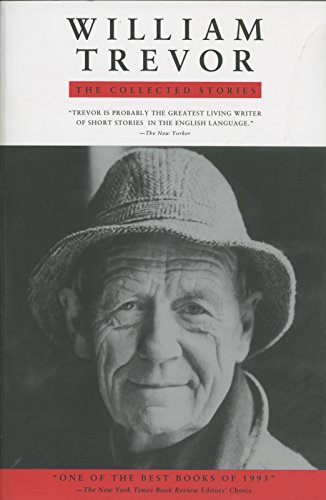“Virgins” concerns the war-time and postwar adolescent friendship of two girls, Laura and Margaretta. Laura, the story’s focal POV, is sent from England by her mother to live with her mother’s friend’s family, the Heaslips, in Ireland during the rationing years of late-World War II. Laura and the Heaslips’ daughter Margaretta become fast best friends, and the story spends the majority of its length detailing the several-year evolution of their friendship, which culminates with the girls meeting Ralph de Courcy. Mrs. Heaslip, annoyed with the girls, suggests they visit their family friends the De Courcys, and Ralph, an invalid with a bad heart is the only one at home. They spend an enchanting afternoon with Ralph, and over time, they separately fall in love with him, wooed by his letters and damaged romantic aura. Ralph ultimately dies after spoiling the girls’ friendship.
This is a good story, I think, and an interesting one, formally. Ralph de Courcy is both the antagonist and what might be described as the story problem, and he does not make an appearance until around the halfway point. The first half of the story luxuriates in describing Laura and Margaretta’s burgeoning friendship and adolescent love for one another—Trevor gets, I think, young best friendship exactly right, both in its intensity and in its hermetic quality. Laura and Margaretta’s relationship is like its own imaginary country, and it is terribly sad the way this country—as so often happens in real life—is easily overthrown by Ralph de Courcy’s capricious attention, as well as, more generally, by sexual maturation. At the end of the story, a grown up Laura wonders if their friendship might have been more valuable than their respective marriages: “How different would their lives have been if the friendship had continued? Some instinct tells her as they stand there among the tourists that their friendship in its time went deeper than the marriages they have mentioned.”
They are standing before each other, having randomly encountered one another in a cathedral in Siena. This is the first reason the story’s unusual structure works—it is bookended by this chance meeting 35 years after the fact, and we are given enough information to know that there was trouble between the women. We want to find out what form it took. The other reason “Virgins” works, I think, is a structural move that defines Iris Murdoch’s body of work, what I think of as “table setting.” Almost all Murdoch novels take nearly half the book, sometimes more, to get to what we would conventionally consider the story’s central problem and plot. The first half of her books, which like “Virgins” typically contain a large of characters, builds relationships and interpersonal dramas that are ultimately set into conflict by the emergent central plot. The result is a story that leisurely takes its time getting to the midpoint, and that picks up energy and drama as it goes, plot as a setting-up and then tumbling-over of multiple chains of dominos. As “Virgins” is only a 20-page story, the table setting is still relatively compressed and focused, yet this is Trevor’s MO here: to render with exquisite emotional and scenic detail the inner workings of the girls’ friendship, to render its casual destruction all the more devastating.
Table setting is not a form we see very often in either short stories or novels, primarily because it depends so heavily on a reader’s patient buy-in. The conventional wisdom is that a novel probably needs to hook the reader with the basic situation and stakes by page forty or lose them, and I think it’s a CW with some actual merit. People are busy and life is difficult, and it’s asking a lot to get through half of a narrative before being told why it really matters. It may be a simple fact of publishing nature that a surpassingly few artists of Trevor or Murdoch’s stature get to indulge in this kind of formal experimentation, however modest it may be.









